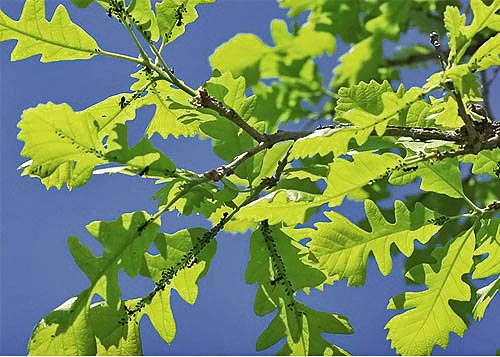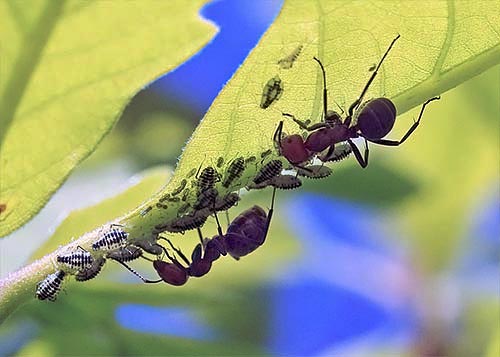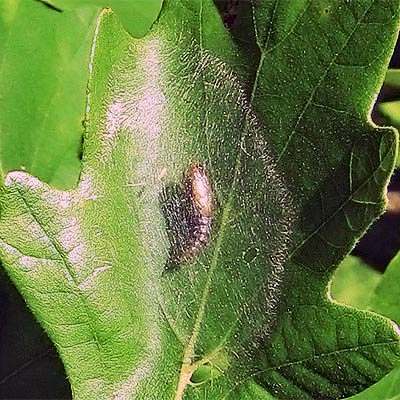Howdy, BugFans,
Periodically, the BugLady discovers a really cool bug story in-between episodes that rates a spontaneous “Bonus Bug episode.”
The BugLady was checking a young bur oak of her acquaintance recently, and she photographed these scenes. She keeps an eye on this tree because it always hosts a lot of ant activity (whether this says good things about the oak or bad, she doesn’t know). Ants, famously, farm aphids. They protect the aphids from predators like ladybugs and move them to greener pastures. In return, they get to “milk” the aphids by stroking the aphids’ abdomen, harvesting the excess honeydew that is a by-product of the aphid’s plant-juice feeding. According to Donald W. Stokes in Discovering Insect Lives, aphids that are farmed hang onto their honeydew longer and so produce larger droplets when they are milked, and they also produce more offspring.
In the absence of ants, aphids and a few other Homopterans “leak” honeydew onto the surrounding leaves, and other insects like flies and wasps land to feed on it.
In the distance shot, check out how many little herds of aphids there are.
The pupa (?) within the web was found on the same bur oak last year. It looks like something that the BugLady saw on “X Files” once.
Go outside. Find a tree—look up (with your mouth closed, of course).
The Bug Lady


